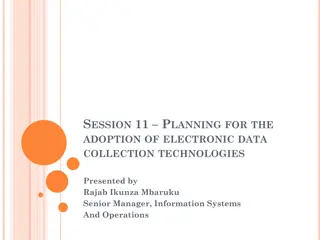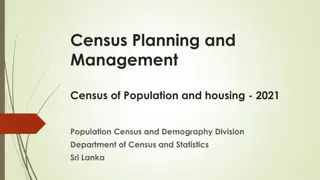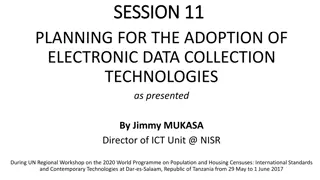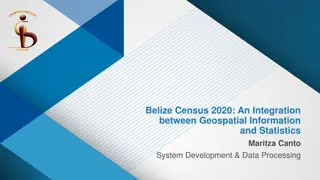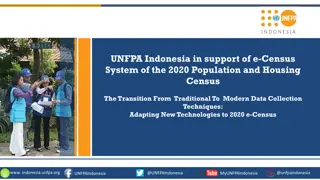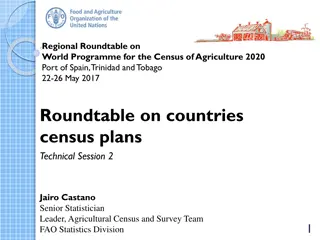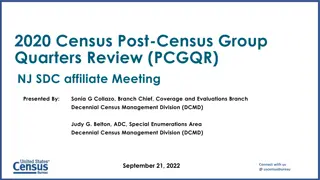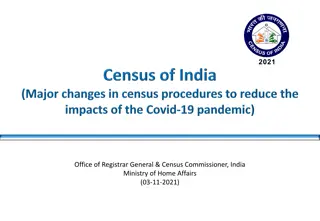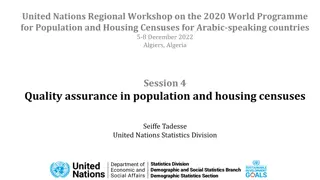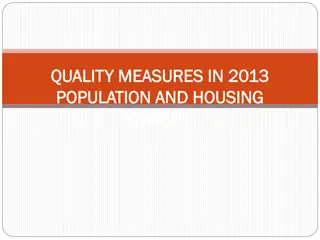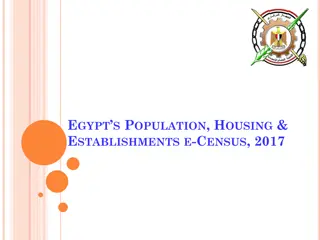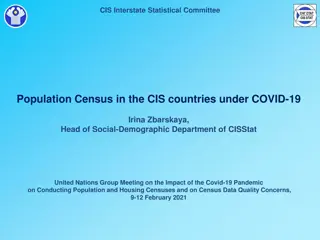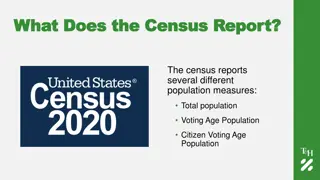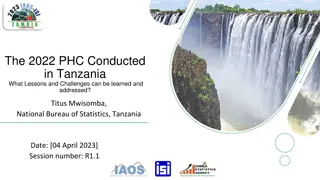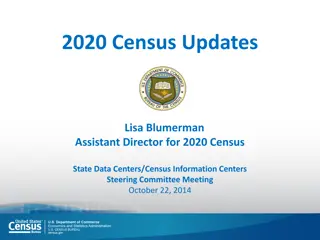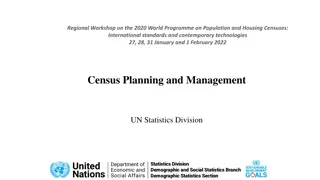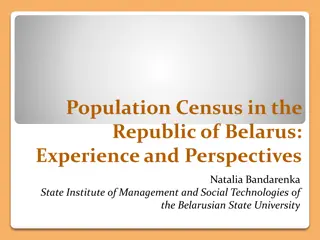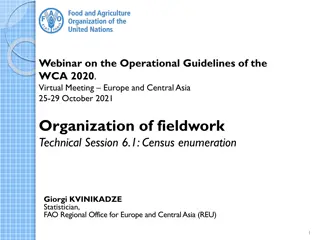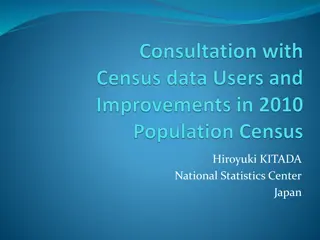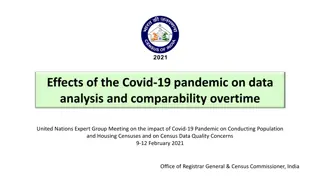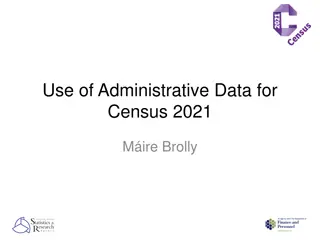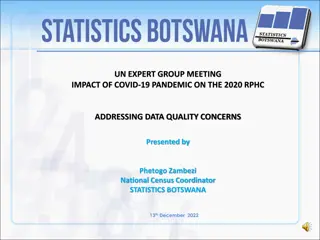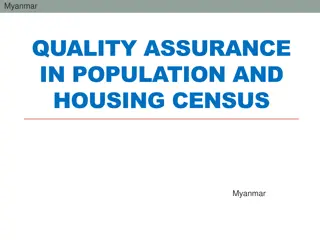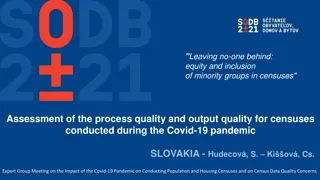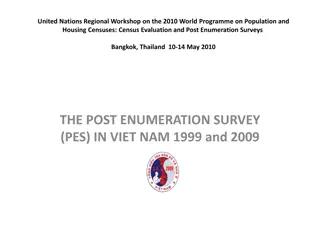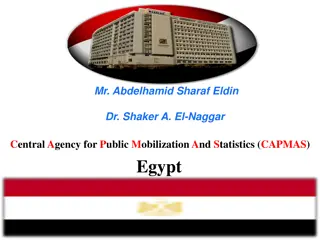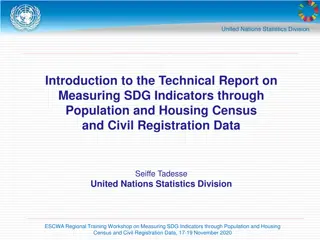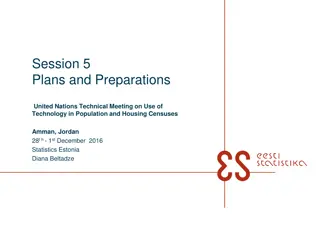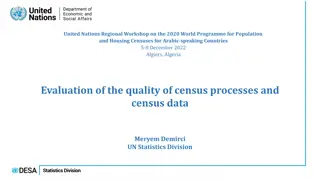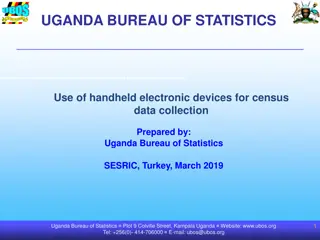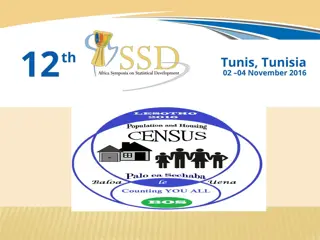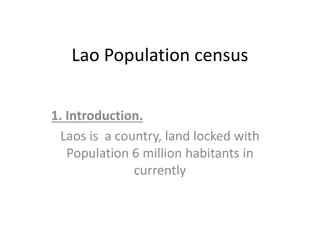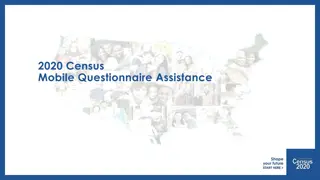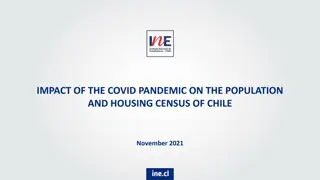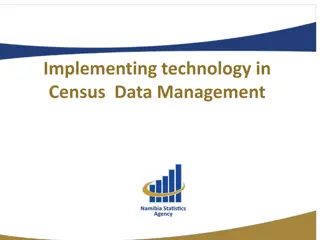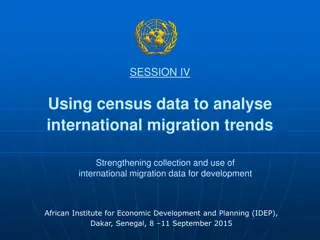Adoption of Electronic Data Collection Technologies for Ghana's Population Census
The adoption of electronic data collection technologies in Ghana for the 2020 Population and Housing Census has brought significant improvements over traditional methods. This transition process aims to streamline data collection, analysis, and dissemination, reducing time lags and improving the quality and timeliness of results. Previous processes using PAPI and scanning technologies faced challenges leading to delays in census results. The move towards electronic devices like Computer Assisted Field Edits (CAF) is enhancing the efficiency of data collection processes in Ghana.
- Electronic Data Collection
- Ghana Census
- Technology Adoption
- Population Census
- Geospatial Technologies
Download Presentation

Please find below an Image/Link to download the presentation.
The content on the website is provided AS IS for your information and personal use only. It may not be sold, licensed, or shared on other websites without obtaining consent from the author. Download presentation by click this link. If you encounter any issues during the download, it is possible that the publisher has removed the file from their server.
E N D
Presentation Transcript
Planning for the adoption of electronic data collection technologies for Ghana 2020 PHC UN Reg. Workshop on the 2020 World Programme on Population & Housing Censuses Lagos, Nigeria 8-11 May, 2017
Outline of presentation Introduction Previous processes Current/transition process Moving forward
Introduction The use of electronic data collection technologies with other geospatial technologies have considerably on planning, designing and implementing census and other survey operations substantially impacted before devices/Internet considerations must be made in the planning, preparation and design stages making a decision census for the adoption collection, electronic important for data NSOs have taken advantage of these advance technologies to modernise these processes, and improve quality and timeliness of results
Past Processes The last two population censuses in Ghana (2000 & 2010) used PAPI and scanning technology for data processing Though the results were released faster than it would have been with the use of typewriters, there were challenges associated with; 1. Printing of questionnaires ( paper quality, delivery of products, 2. Equipment for scanning (expensive, become obsolete in no time, ) Scanned information often have different processes before ascii output is obtained Takes time and space
Past Processes contd All these affects the production and effective utilization of statistics and the goals of a national statistical system- Delays in the release of final census results (between 2-3 years)- affecting planning Over spending of budget lines leading to inability to undertake some other important planned activities
The transition process The challenges associated with the use of scanning technology led to the need for Ghana Statistical Service to search and adopt the use of electronic devices for data collection which will dramatically reduce the time lag between data collection, analysis and dissemination In the 2014 Ghana Demographic Health Survey (GDHS), GSS introduced the Computer Assisted Field Edits (CAF ) technology where paper questionnaires were used for interviews and later entered onto a computer in the field. Data files were transferred to the central office immediately
The transition process contd In 2015, GSS conducted a Family Life and Health Survey (DFID, IDS-UK) where Computer Assisted Personal Interview (CAPI) technology was used for the first time 3 staff were trained at US Census Bureau in the use of CAPI technology The success of the 2015 household survey (LFS) became the stepping stone for the adoption of the technology
The transition process contd Subsequently, GSS has used tablets for the 2015 Ghana Labour Force Survey, GLSS7 listing exercises , 2016 Reproductive Health Commodity Security Survey and GLSS7 main data collection. Plans are also underway for the use of tablets for the Census of Agriculture to be conducted this year. The pilot has already been done using tablets.
Moving forward The success of the main field work of the Census of Agriculture using tablets will further inform GSS as to the ease of using tablets for large scale surveys. Over 5000 interviewers and supervisors will be involved in the Census Agriculture. -Procurement of tablets for the Census of Agriculture is underway. Other preparatory activities for 2020 PHC are ongoing Demarcation Digitizing of EA maps Project document
Other considerations include Initial investment as compared to printing and storage of PAPI Cost of equipment & type of operating system-Android devices and software compatibility Training of interviewers, supervisors including staff in the team slightly more days than using PAPI Communication and connectivity-, 2 SP cover entire country Data transfer -cloud-based servers Capacity to handle survey Collaboration between DP and IT team for technical assistance and trouble shooting during system development , testing and fieldwork
Other considerations contd Adoption of CAPI technologies enhanced the design of census process Modifications to questionnaire are effected and deployed immediately DB of listed structures and households instead of PAPI No need for mass storage of PAPI Strategies for maximising the benefits of investment Require less space for storage of devices Reuse devices for other intercensal surveys Rent/lease out devices to other institutions.
Challenges so far Malfunctioning of devices in the course of fieldwork , and sometimes delays in replacement due to distance thus forced to revert to PAPI Some remote areas are without electricity and interviewers have to travel long distances to charge devices-tablets and power banks. Sometimes difficult to edit work done by interviewers during field monitoring. Acquiring a tablet which cannot run some modules of the data management process due to cost vrs sophisticated devices with under utilized functionalities
End of Presentation Thank you for your attention


